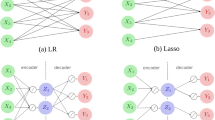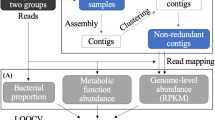Abstract
Perovskite quantum dots (PQDs) are novel nanomaterials wherein perovskites are used to formulate quantum dots (QDs). The present study utilizes the excellent fluorescence quantum yields of these nanomaterials to detect 16S rRNA of circulating microbiome for risk assessment of cardiovascular diseases (CVDs). A long short-term memory (LSTM) deep learning model was used to find the association of the circulating bacterial species with CVD risk, which showed the abundance of three different bacterial species (Bauldia litoralis (BL), Hymenobacter properus (HYM), and Virgisporangium myanmarense (VIG)). The observations suggested that the developed nano-sensor provides high sensitivity, selectivity, and applicability. The observed sensitivities for Bauldia litoralis, Hymenobacter properus, and Virgisporangium myanmarense were 0.606, 0.300, and 0.281 fg, respectively. The developed sensor eliminates the need for labelling, amplification, quantification, and biochemical assessments, which are more labour-intensive, time-consuming, and less reliable. Due to the rapid detection time, user-friendly nature, and stability, the proposed method has a significant advantage in facilitating point-of-care testing of CVDs in the future. This may also facilitate easy integration of the approach into various healthcare settings, making it accessible and valuable for resource-constrained environments.
Graphical Abstract








Similar content being viewed by others
Data availability
The data that support the findings of this study are available on request from the corresponding author (PKM).
Abbreviations
- BL:
-
Bauldia litoralis
- CMB:
-
Circulatory microbiome
- CCF:
-
Cell-free circulating
- CVDs:
-
Cardiovascular diseases
- DAPI:
-
4′,6-Diamidino-2-phenylindole
- EDC:
-
1-Ethyl-3-(3-dimethylaminopropyl) carbodiimide
- ESRD:
-
End-stage renal disease
- HYM:
-
Hymenobacter properus
- IBD:
-
Intestinal barrier dysfunction
- NFW:
-
Nuclease-free water
- PI:
-
Propidium iodide
- PQDs:
-
Perovskite quantum dots
- QDs:
-
Quantum dots
- VIG:
-
Virgisporangium myanmarense
References
Liu H, Chen X, Hu X, Niu H, Tian R, Wang H, Pang H, Jiang L, Qiu B, Chen X, Zhang Y (2019) Alterations in the gut microbiome and metabolism with coronary artery disease severity. Microbiome 7(1):1–4
Ahmadmehrabi S, Tang WW (2017) Gut microbiome and its role in cardiovascular diseases. Curr Opin Cardiol 32(6):761
Koren O, Spor A, Felin J, Fåk F, Stombaugh J, Tremaroli V, Behre CJ, Knight R, Fagerberg B, Ley RE, Bäckhed F (2011) Human oral, gut, and plaque microbiota in patients with atherosclerosis. Proc Natl Acad Sci 15:4592–4598
Shulzhenko N, Morgun A, Hsiao W, Battle M, Yao M, Gavrilova O, Orandle M, Mayer L, Macpherson AJ, McCoy KD, Fraser-Liggett C (2011) Crosstalk between B lymphocytes, microbiota and the intestinal epithelium governs immunity versus metabolism in the gut. Nat Med 17(12):1585–1593
Szeto CC, McIntyre CW, Li PK (2018) Circulating bacterial fragments as cardiovascular risk factors in CKD. J Am Soc Nephrol 29(6):1601–1608
Rocha DM, Caldas AP, Oliveira LL, Bressan J, Hermsdorff HH (2016) Saturated fatty acids trigger TLR4-mediated inflammatory response. Atherosclerosis 244:211–215
Krieg AM (2002) CpG motifs in bacterial DNA and their immune effects. Annu Rev Immunol 20(1):709–760
Ricci V, Carcione D, Messina S, Colombo GI, D’Alessandra Y (2020) Circulating 16S RNA in biofluids: extracellular vesicles as mirrors of human microbiome? Int J Mol Sci 21(23):8959
Nikkari S, McLaughlin IJ, Bi W, Dodge DE, Relman DA (2001) Does blood of healthy subjects contain bacterial ribosomal DNA? J Clin Microbiol 39(5):1956–1959
Goraya MU, Li R, Mannan A, Gu L, Deng H, Wang G (2022) Human circulating bacteria and dysbiosis in non-infectious diseases. Front Cell Infect 12:932702
Paladugu B, Kumar A, Parrillo JE, Der S, Osman J, Mensing J, Falvo L, Xu X, Kumar A (2004) Bacterial DNA and RNA induce rat cardiac myocyte contraction depression in vitro. Shock 21(4):364–369
Szeto CC, Kwan BC, Chow KM, Kwok JS, Lai KB, Cheng PM, Pang WF, Ng JK, Chan MH, Lit LC, Leung CB (2015) Circulating bacterial-derived DNA fragment level is a strong predictor of cardiovascular disease in peritoneal dialysis patients. PLoS One 10(5):e0125162
Mishra PK, Shandilya R (2020) Nanophotonic biosensors as point-of-care tools for preventive health interventions. Nanomedicine 15(16):1541–1544
Li S, Wang Z, Li Y, Su CJ, Fu Y, Wang Y, Lu X (2023) Fostering the dense packing of halide perovskite quantum dots through binary-disperse mixing. ACS Nano 17(20):20634–20642
Salari R, Amjadi M, Hallaj T (2023) Perovskite quantum dots as a chemiluminescence platform for highly sensitive assay of cefazolin. Spectrochim Acta A Mol Biomol Spectrosc 285:121845
Balakrishna RG (2023) Ratiometric probe of PQDs/R6G: Achieving high sensitivity and precision in contaminant detection. Sens Actuators B: Chem 397:134626
Tran L, Park S (2021) Highly sensitive detection of dengue biomarker using streptavidin-conjugated quantum dots. Sci Rep 11(1):15196
Shandilya R, Bhargava A, Ratre P, Kumari R, Tiwari R, Chauhan P, Mishra PK (2022) Graphene quantum-dot-based nanophotonic approach for targeted detection of long noncoding RNAs in circulation. ACS Omega 7(30):26601–26609
Shandilya R, Kumari R, Singh RD, Chouksey A, Bhargava A, Goryacheva IY, Mishra PK (2021) Gold based nano-photonic approach for point-of-care detection of circulating long non-coding RNAs. Nanomedicine 36:102413
Ratre P, Nazeer N, Bhargava A, Thareja S, Tiwari R, Raghuwanshi VS, Mishra PK (2023) Design and fabrication of a nanobiosensor for the detection of cell-free circulating miRNAS-LncRNAS-mRNAS triad grid. ACS Omega 8(43):40677–40684
Shandilya R, Kumari R, Bunkar N, Bhargava A, Chaudhury K, Goryacheva IY, Mishra PK (2022) A photonic dual nano-hybrid assay for detection of cell-free circulating mitochondrial DNA. J Pharm Biomed Anal 208:114441
Amar J, Lange C, Payros G, Garret C, Chabo C, Lantieri O, Courtney M, Marre M, Charles MA, Balkau B, Burcelin R (2013) Blood microbiota dysbiosis is associated with the onset of cardiovascular events in a large general population: the DESIR study. PLoS One 8(1):e54461
Khan I, Khan I, Jianye Z, **aohua Z, Khan M, Hilal MG, Kakakhel MA, Mehmood A, Lizhe A, Zhiqiang L (2022) Exploring blood microbial communities and their influence on human cardiovascular disease. J Clin Lab Anal 36(4):e24354
Xu H, Yang F, Bao Z (2023) Gut microbiota and myocardial fibrosis. Eur J Pharmacol 940:175355
Païssé S, Valle C, Servant F, Courtney M, Burcelin R, Amar J, Lelouvier B (2016) Comprehensive description of blood microbiome from healthy donors assessed by 16 S targeted metagenomic sequencing. Transfusion 56(5):1138–1147
Su H, Wang W, Shi R, Tang H, Sun L, Wang L, Liu Q, Zhang T (2023) Recent advances in quantum dot catalysts for hydrogen evolution: synthesis, characterization, and photocatalytic application. Carbon Energy 1:e280
Zoghi M, Pourmadadi M, Yazdian F, Nigjeh MN, Rashedi H, Sahraeian R (2023) Synthesis and characterization of chitosan/carbon quantum dots/Fe2O3 nanocomposite comprising curcumin for targeted drug delivery in breast cancer therapy. Int J Biol Macromol 249:125788
Hamidu A, Pitt WG, Husseini GA (2023) Recent breakthroughs in using quantum dots for cancer imaging and drug delivery purposes. Nanomaterials 13(18):2566
Shandilya R, Sobolev AM, Bunkar N, Bhargava A, Goryacheva IY, Mishra PK (2020) Quantum dot nanoconjugates for immuno-detection of circulating cell-free miRNAs. Talanta 208:120486
Shandilya R, Bunkar N, Kumari R, Bhargava A, Chaudhury K, Goryacheva IY, Mishra PK (2021) Immuno-cytometric detection of circulating cell free methylated DNA, post-translationally modified histones and micro RNAs using semi-conducting nanocrystals. Talanta 222:121516
Sebastian D, Pallikkara A, Bhatt H, Ghosh HN, Ramakrishnan K (2022) Unravelling the surface-state assisted ultrafast charge transfer dynamics of graphene quantum dot-based nanohybrids via transient absorption spectroscopy. J Phys Chem C 126(27):11182–11192
Author information
Authors and Affiliations
Contributions
PKM devised the concept, developed the methodology, and supervised the experiments; NN, VG, RD, KZ, and NS performed most of the experiments; VG, PR, and NS collected and characterized the samples; NN and VG designed the figures; VG, PR, AB, and PKM performed the data analysis and interpretation; RT reviewed and edited the manuscript; and NN, VG, AB, and PKM drafted the original manuscript.
Corresponding author
Ethics declarations
Ethical approval
The study was approved by the Institutional Ethics Committee (IEC), and the guidelines of the Indian Council of Medical Research (ICMR), Department of Health Research (DHR), Ministry of Health and Family Welfare (MoHFW), Government of India, were followed.
Conflicts of interest
The authors declare no competing interests.
Additional information
Publisher's Note
Springer Nature remains neutral with regard to jurisdictional claims in published maps and institutional affiliations.
Supplementary Information
Below is the link to the electronic supplementary material.
Rights and permissions
Springer Nature or its licensor (e.g. a society or other partner) holds exclusive rights to this article under a publishing agreement with the author(s) or other rightsholder(s); author self-archiving of the accepted manuscript version of this article is solely governed by the terms of such publishing agreement and applicable law.
About this article
Cite this article
Nazeer, N., Gurjar, V., Ratre, P. et al. Cardiovascular disease risk assessment through sensing the circulating microbiome with perovskite quantum dots leveraging deep learning models for bacterial species selection. Microchim Acta 191, 255 (2024). https://doi.org/10.1007/s00604-024-06343-y
Received:
Accepted:
Published:
DOI: https://doi.org/10.1007/s00604-024-06343-y




